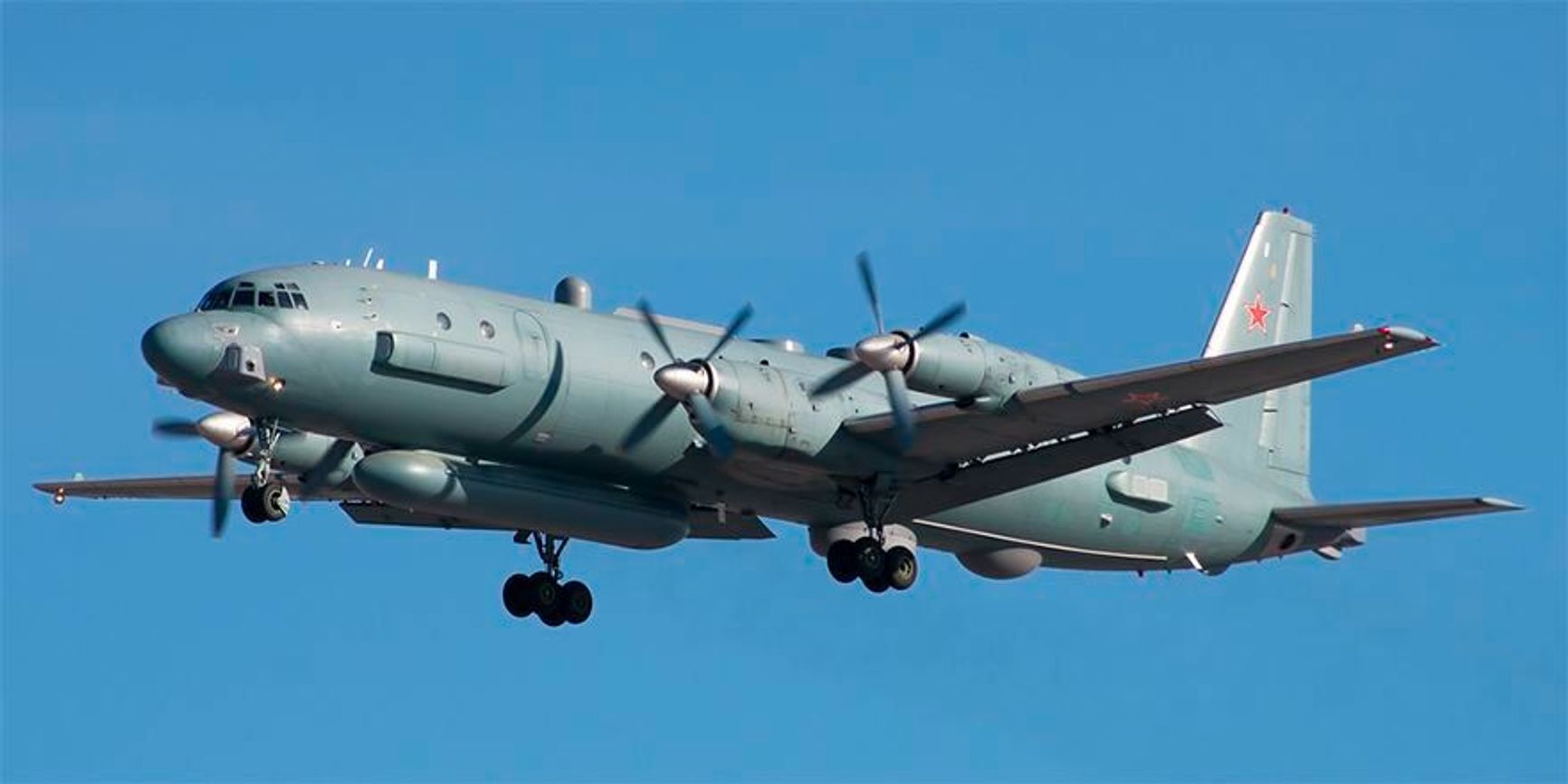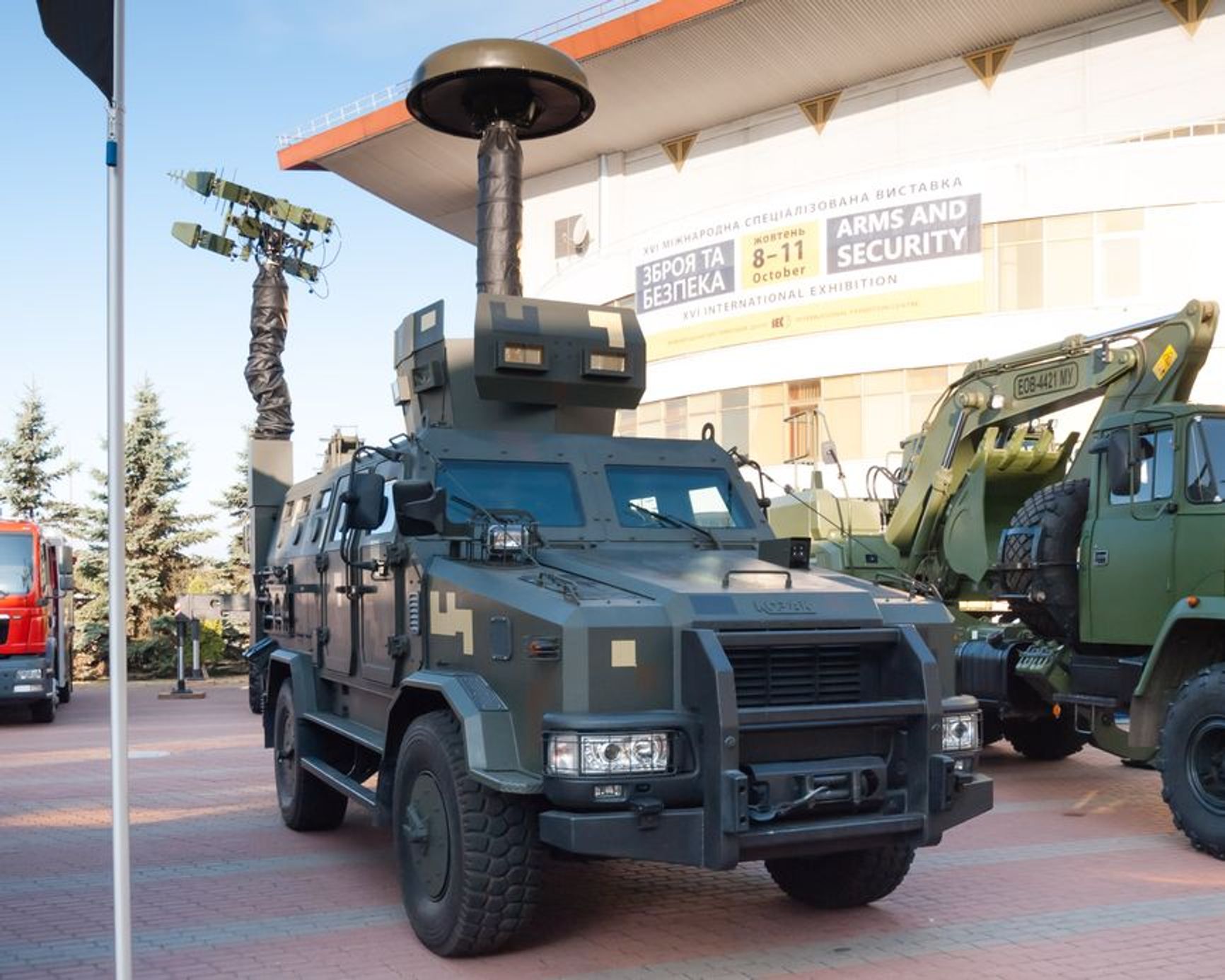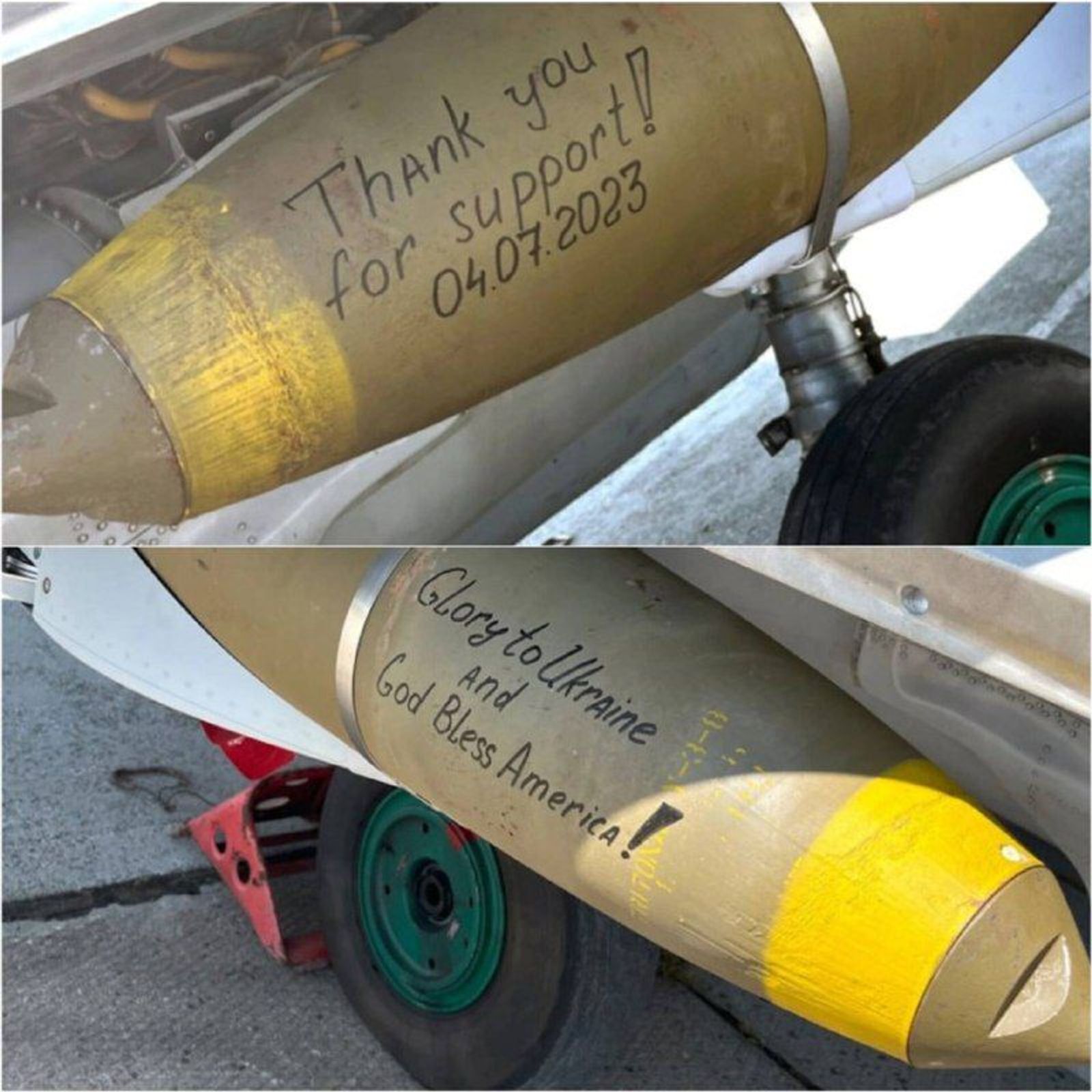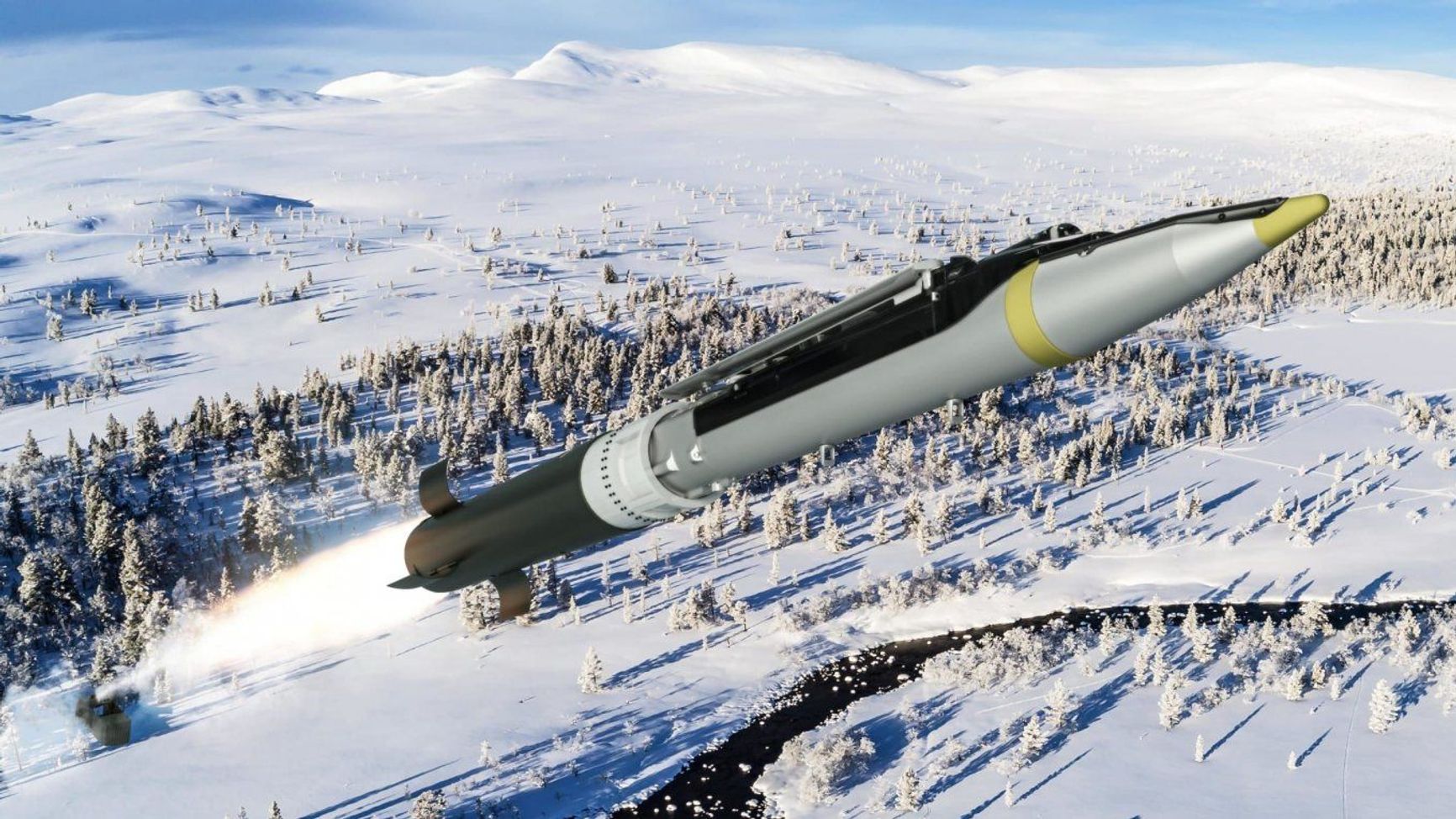

In the coming months, Kyiv is expected to receive several dozen F-16 fighter jets from its Western allies, which it will be able to use to strike military targets inside Russia. Aside from their obvious combat potential, the value of these aircraft to Ukraine is that they can integrate GPS-guided munitions, which will finally challenge Russia's dominance in the field of electronic warfare (EW), according to independent military analyst Colby Badhwar.
In March 2022, Ukrainian forces captured a strange metal container that had been abandoned by the Russian Army in Makariv, a rural settlement in the western part of the Kyiv region.Though the Ukrainian troops may not have known what the object was, the find would turn out to be a massive intelligence coup for Ukraine — and for its Western supporters. Not long after pictures of the mysterious piece of equipment began circulating on social media, it was identified as the command post for Russia’s 1RL257 Krasukha-4 electronic warfare system.
The US Armed Forces Joint Publication 3-13.1 defines electronic warfare (EW) as “military action involving the use of electromagnetic energy and directed energy to control the electromagnetic spectrum or to attack the enemy.” The Krasukha-4, one of Russia’s most technologically advanced EW systems, transmits radio signals to jam the radars on enemy surveillance and command & control aircraft. Ukraine, of course, has no such aircraft, but NATO does, and the transatlantic alliance has been continuously flying missions around the perimeter of its airspace since before the invasion in order to collect intelligence that can be passed along to Ukrainian command.
This explains why Russia had a Krasukha-4 deployed so far forward. It was shielding Russian forces from NATO’s eyes in the sky. That captured Krasukha quickly made its way to the United States, where American engineers have had the opportunity to dissect it and learn what they’re up against.
Despite that setback, Russian EW was quite effective during the opening stages of the full-scale war — too effective, in fact.
Russian electronic warfare was quite effective during the opening stages of the full-scale war — too effective, in fact
It had been very successful in disrupting Ukrainian surface-to-air missile systems, but it was so powerful that it was causing the serious problem of “electronic fratricide.” Russia’s own communications systems did not consist of military-grade encrypted radios, but instead relied on cheap Chinese commercial technology products that were being jammed as well. This forced the Russians to scale back their EW operations so that they could regain effective command and control of their units, which were in disarray after the initial plan of a three-day operation failed. By March, Ukrainian air defenses had begun to inflict heavy loses on the Russian Air Force.
The Russians have learned from these experiences. During the summer of 2022 — and especially by the fall — they had improved their combined arms coordination considerably. Orlan-10 reconnaissance unmanned aerial systems (UAS) were used in conjunction with EW to identify and jam Ukrainian short and medium range air defense systems operating near the frontline, allowing indirect fire to target them. This created a vicious cycle in which Ukrainian air defenses were forced to operate further and further away from the front, allowing Russian aviation and missile strikes to have a free hand in targeting Ukrainian positions on the battlefield. The situation continues to be a largely unmitigated disaster for Ukrainian forces. As I noted last year, glide-bomb strikes launched from Russian fighter aircraft flying beyond the range of Ukrainian air defenses have become one of the invading force’s most potent weapons.
Much like the Missile Balance, Russia has a massive advantage in both the quality and quantity of EW systems on the battlefield in Ukraine. The Russian Armed Forces operates at least 3 dozen different ground based EW platforms. Though dedicated electronic attack aircraft is one category where the United States has a clear advantage, Russia does operate the Il-22PP in this role. The L-175 Khibiny electronic countermeasures (ECM) system with its RTU 518-PSM jamming pod is available for a number of different fighter aircraft, including the Su-30SM, Su-34, and Su-35S. The overall EW capabilities of Russian forces was rated quite highly by a 2017 report from Estonian think tank ICDS.

The Il-22PP
Ukraine’s capabilities are much more limited. While the U.S. and other donors have provided some rudimentary EW capabilities, mostly in the form of counter-unmanned aerial systems (CUAS), Ukraine is mostly reliant on their own domestic systems and legacy Soviet systems. These include the NOTA & Bukovel-AD, which are CUAS, and the Plastun-RP3000 & Kolchuga-M — electronic support systems which have a sensing role.
The availability of NOTA & Bukovel-AD, both of which are newer Ukrainian designs, is insufficient. 65% of Ukraine’s electronic attack systems are older Soviet models.
65% of Ukraine’s electronic attack systems are older Soviet models

NOTA
If anything, Russia has been successful in expanding their EW capabilities. Since before the war, Russia has maintained 5 dedicated EW Brigades. These units control the most powerful systems that Moscow’s forces have at their disposal, such as Krasukha, Leer-3, and Murmansk-BN. The Russian Army also had an EW company organic at the brigade level, and over the course of the war, it has been working to establish organic EW capabilities at all echelons of their units, even down to the platoon level. The Ukrainians have assessed that the Russians have at least one CUAS system for each platoon. This, in combination with the deployment of more powerful EW systems such as the Shipovnik-Aero, has resulted in Ukrainian UAS loses of approximately 10,000 per month.
Russia’s advantage in EW was identified by former Ukrainian Commander-in-Chief Valerii Zaluzhnyi as a major obstacle that Ukraine needs to overcome if it is to break the deadlock on the front. Naturally, Russian EW assets have been high priority targets for Ukraine. The introduction of Western precision guided weapons into the arsenal of Ukrainian forces has been instrumental in their ability to target Russian high value assets. The success of systems such as HIMARS has been well documented, particularly during their first year on the battlefield. The Russians have adapted to this too though, and their EW capabilities have served them well in degrading the effectiveness of western GPS guided munitions.
How significant this degradation is has been a point of contention. It is incorrect to assume that all GPS guided munitions are equally susceptible to being jammed by Russian EW. Understanding the nuances around this reality is essential to informing the debate around what capabilities should be prioritized for delivery to Ukraine. Exploring the challenges and solutions for some of the key weapon systems one by one will be highly instructive.
Excalibur
The M982 Excalibur is a 155mm extended range artillery shell with GPS and inertial navigation system (INS) guidance. Zaluzhnyi noted that Excalibur had been highly effective in targeting Russian self-propelled guns and counterfire radars.

Dr. Jack Watling of the Royal United Services Institute reported, based on his interviews with Ukrainian personnel, that it was 70% effective when first introduced. However, it has proven highly susceptible to GPS jamming, and was reduced to just a 6% effective rate after the Russians optimized their EW operations to target it. The Ukrainians have therefore largely abandoned using Excalibur. This is not a significant problem in the grand scheme of things. The U.S. has provided Ukraine with only 7000 Excalibur rounds, with the last batch having arrived in April 2023. Ukraine got good use out of them for a year and then phased them out when they were no longer effective. If it is assessed that a precision guided 155mm high explosive round is an important capability, the U.S. Army has the option of providing Ukraine with the new M1156A1 Precision Guidance Kit (PGK). The M1156A1 PGK, which replaces a standard fuse on a 155mm M795 shell, uses M-Code GPS technology, which is much more resilient to GPS interference from EW.
GMLRS
Guided Multiple Launch Rocket System missiles continue to be an effective system for Ukraine. Russian efforts to jam their GPS guidance was first reported in May of last year. The U.S. Department of Defense has worked continuously both with the Ukrainians, and with manufacturer Lockheed Martin, to provide software patches to increase the missiles’ resilience to EW.

While no solution is foolproof, the combination of the patches and adaptations in Ukrainian mission planning, such as allocating an increased number of missiles for each target, has kept GMLRS in the fight. While this method is less cost effective, it still ensures that Ukraine can maintain a critical precision fires capability to strike targets out to a range of 80-90 kilometers. New videos of GMLRS strikes have continued to emerge, meaning suggestions that GMLRS has been rendered completely ineffective are clearly inaccurate.
JDAM-ER
Ukraine has been receiving Joint Direct Attack Munition-Extended Range kits and 500lb Mark 82 bombs since early 2023. The JDAM-ER kits turn the unguided Mark 82s into precision glide bombs, guided by GPS and INS. With the support of the U.S. Air Force and Boeing, the Ukrainian Air Force has managed to integrate the bombs onto their Su-27 & MiG-29 fighter aircraft.

Like GMLRS, reports of their susceptibility to jamming emerged in the spring. But Boeing has continued to provide software updates to improve resilience, giving them an effective rate of over 60% for most of 2023.
GLSDB
The Ground Launched Small Diameter Bomb finally arrived in Ukraine in February with high expectations after a year-long procurement process. Some analysts went so far as to suggest that it would be more impactful than ATACMS. In April, U.S. Undersecretary of Defense William LaPlante disclosed that, due to issues that go beyond Russian GPS jamming, it had proven to be largely ineffective. In May, Reuters reported that Boeing would attempt to resolve the vulnerability to EW, but that the fix would take months.

This is of course a disappointing result, but the silver lining is that the Ukrainians were not relying on the untested GLSDB to begin with, and it had arrived in such limited quantities that it was not going to be a major factor on the battlefield in any event.
SDB
Unlike its ground launched derivative, unmodified GBU-39/B Small Diameter Bombs (SDB) have apparently been 90% effective. News of their provision to Ukraine came as a surprise, having reportedly been delivered since November 2023 to the Ukrainian Air Force for use on their fighter aircraft alongside JDAM-ERs. Unlike the JDAM, SDB is a purpose-built glide bomb, also guided by GPS and INS.

The reason why SDB and JDAM have been so much more effective than GLSDB may be explained by their range and flight time. GLSDB can travel up to 150 kilometers, whereas SDB is practically limited to targets located within 100 kilometers due to the fact that Ukrainian aircraft must deploy them at low altitudes in order to avoid Russian air defenses. The longer these munitions travel in a GPS denied environment, the less accurate they become, as they rely solely on their INS guidance, which becomes less effective over greater distances.
Opportunities for Ukraine
Evaluating the impact of Russian EW on American provided GPS guided munitions holistically, we can conclude that only one system, GLSDB, has been totally ineffective. That may yet change too, pending the outcome of Boeing’s modifications. Excalibur was successful initially but succumbed to Russian adaptations and was not deemed worthy of further investments. GMLRS, JDAM-ER, and SDB have all proven to be effective and still maintain relevance thanks to continued efforts to respond to Russia’s own adaptations.
The task ahead is to now equip Ukraine with new capabilities that put Russia on the defensive and challenge their EW supremacy. The pending arrival of F-16s creates several possibilities here. The suite of weapons that has already been provided to Ukraine — JDAM, SDB, High-Speed Anti-Radiation Missile (HARM) — all become more effective when employed by an aircraft that they are fully integrated with. As I have noted before, Ukraine’s F-16s will become much more effective if they are equipped with the AN/ASQ-213 HARM Targeting System, AN/AAQ-33 Sniper Advanced Targeting Pod, or the AN/ALQ-131 Electronic Countermeasures Pod. The U.S. Air Force has already taken a long overdue step to help better equip Ukraine’s aircraft.
In early May the U.S. Air Force awarded a California based company a $23.5 million contract to provide Home-On GPS Jam seekers to be integrated onto Ukraine’s JDAM-ERs. The double-edged sword of electronic attack systems is that when they are emitting their powerful radio waves in order to jam the enemy’s communications, they are broadcasting their own location as well.
When electronic warfare systems emit their powerful radio waves in order to jam the enemy’s communications, they are broadcasting their own location as well
Home-On-Jam (HOJ) seekers follow those signals back to the source emitting them. These HOJ seekers for JDAM can be installed in the field as well, which will reduce the lead time to get them deployed. The provision of newer models of HARM or Advanced Anti-radiation Guided Missile (AARGM) would also give Ukraine additional munitions with this capability. While the Russians will certainly find ways to adapt to this new capability, it will reduce the effectiveness of their EW systems and will create opportunities for Ukraine to exploit gaps in the GPS denied battlespace. Russia’s domination of the electromagnetic spectrum has been a fact since the start of the war. It’s time to burst that bubble.